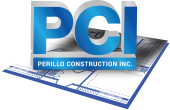Tenant improvements are also known as tenant build outs and leasehold improvements can be challenging to understand, especially for those new to commercial leasing. Tenant improvements by definition are the tailored changes the property owner makes to a rental space to meet the needs of the tenant. The changes are agreed upon in a lease agreement and may include improvements or changes to floors, walls, lighting, and more. The goal of the tenant improvement build out is to create a space appropriate for the tenant and but also fitting for the property owner. During lease negotiations, both the needs of the tenant and the property owner will be taken into account.
Tenant Improvement Negotiations
The negotiation process may feature a number of talking points including turnkey build outs, usable space, materials included, occupancy, contingency costs, and more. Turnkey build outs, though harder to find, feature the property owner bearing the cost of all the elements of the construction process and therefore all the financial risk, should the project go over budget. Usable space can refer not only to the square footage allowance and rentable space, but also common areas. Tenants should know what is included in the build out – both soft and hard costs – as well as how the allowance will be disbursed and whether it includes any furnishings. The timing of the project including when tenants will be able to occupy the space (which should coincide with the beginning of rent payments) is also a crucial negotiation point. Contingencies also need to be accounted for – such as a plan for contingency costs, a build out cap, and unexpected fees. Once the points of the tenant improvement build out are in place, the planning and design can begin, followed by the construction.
Planning the Tenant Improvement Build Out
With negotiations complete, planning, design, and budget/cost estimation are now ready to begin. You will want to select a professional team with the knowledge and experience for your area. An experienced team will be licensed and clearly understand the building codes, regulations, inspection, and permit process for your property. The architect will guide the design and planning to ensure the build out meets all local and state requirements. Next, comes budget and cost estimation followed by the selection of a licensed contractor. The contractor you chose for the build out should be licensed and insured and prepared to provide examples of past build out successes and references. Cost estimates should be clear and based on your specific requirements, as well as factoring in contingency costs.
Tenant Improvement Construction
Your contractor should monitor the progress of the project on a regular basis, usually daily but sometimes weekly, and report to you as milestones from the project schedule are being met. Your construction updates should also include pictures of the project’s progression, as well as building inspection reports, schedule changes, and any delays. When the construction is complete the next step is your certificate of occupancy. A certificate of occupancy signals fully inspected and approves workmanship and adherence by all the local authorities.
The Walk Through
When everything is in place, it will be time for the final walk through with the punch list. The punch list is the list of contracted items the contractor agreed to complete in the tenant improvement build out. Each item should be marked as completed, and you should verify that fact during the walk through. You should never sign until even the minor issues are completed or corrected.
When you are ready to begin your tenant improvement build out – from planning to design to construction to successful completion – the professionals at Perillo Construction are ready to guide you. Call today and get your project started.

